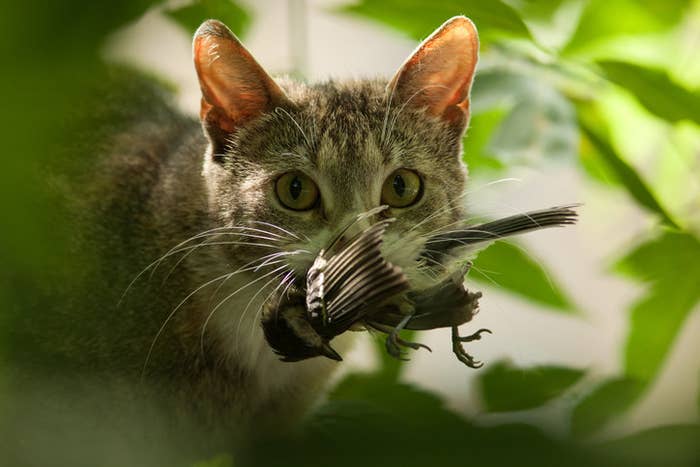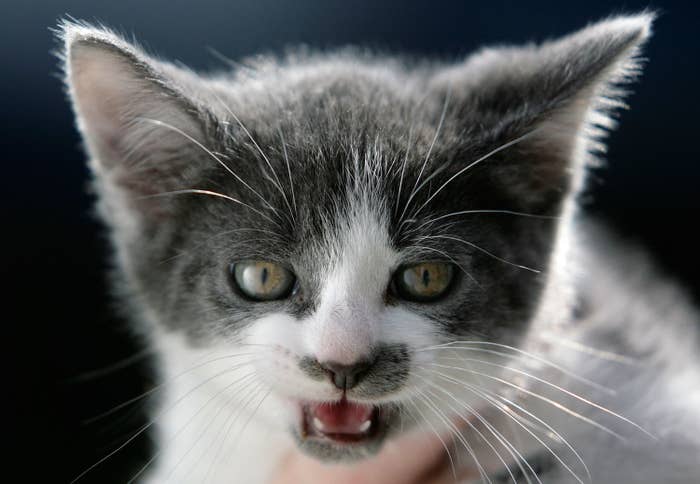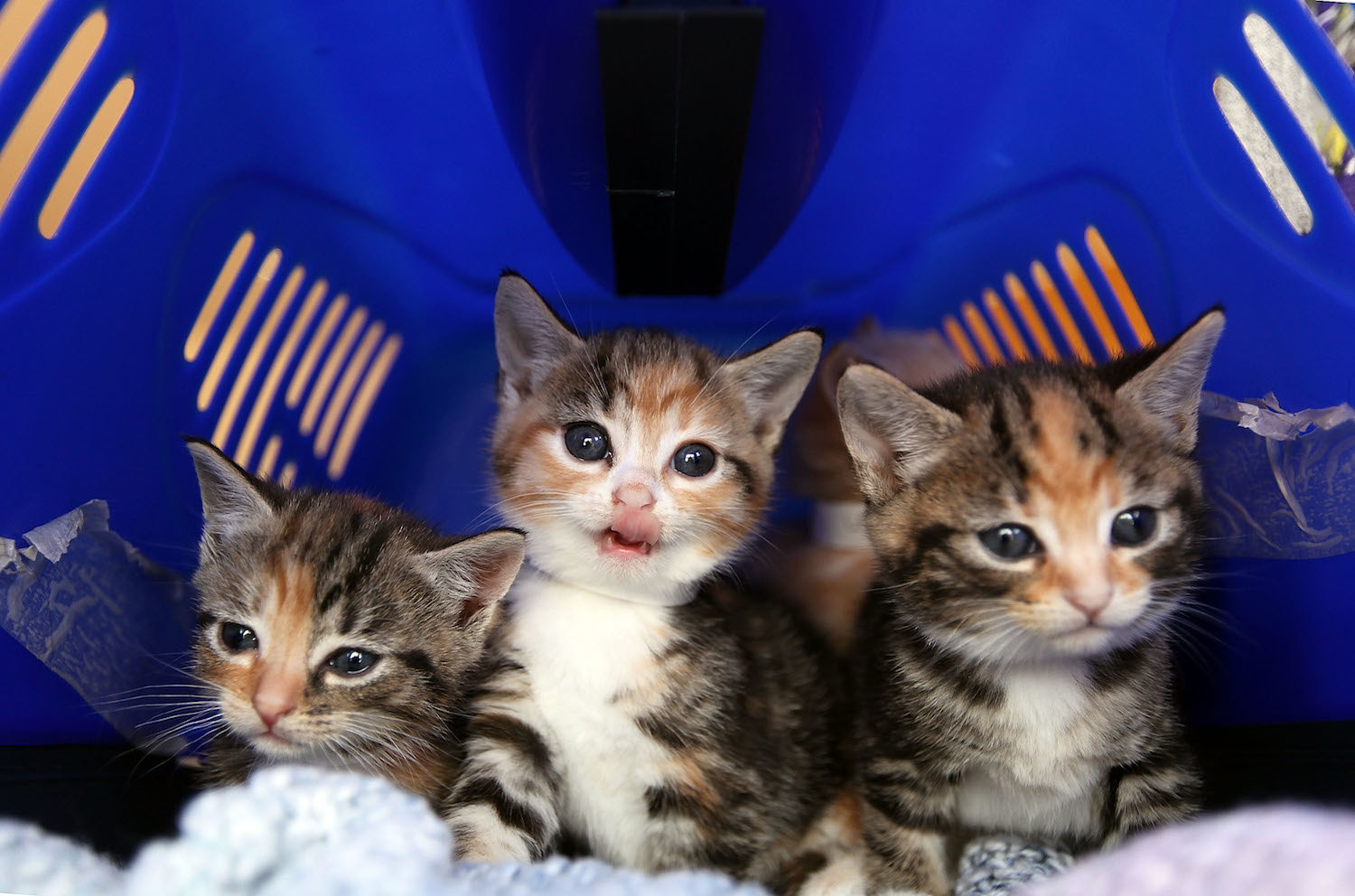
By downplaying the dangers of feral cats, animal advocacy groups are distorting science just like climate deniers. Or at least that’s the message of a new report from conservation scientists, the latest shot fired in the savage, perennial war between cat and bird lovers.
There are roughly 600 million domestic cats worldwide, and more than 50 million roam freely in North America, either in feral colonies or released from homes. They kill 1.3 billion to 4 billion birds every year in the US alone. Outside the US, feral cats are responsible in the extinction of 63 species around the world.
That has sparked a long-running fight between cat fans, who support “trap-neuter-return” (TNR) programs to limit feral populations, and conservation scientists, who advocate euthanizing feral cats in order to save endangered birds.
In a new report in the journal Conservation Biology, researchers Scott Loss of Oklahoma State University and Peter Marra of the National Zoological Park in Washington, DC, compare cat advocacy groups to climate science deniers and cigarette maker “merchants of doubt.”
“Cat advocates advance propaganda that blatantly contradicts scientific evidence,” they write.
Some fact sheets and reports from advocates, for example, argue against broad scientific evidence showing that TNR programs don’t limit cat populations, and that wild cats are a major source of toxoplasmosis, the leading cause of death from foodborne illness in the US. They point the finger specifically at Alley Cat Allies, which claims more than 650,000 members, and Best Friends Animal Society, which have put on public relations campaigns aimed at getting feral cats protected wildlife status. These campaigns, the new study points out, are full of false information, such as the suggestion that gardening causes toxoplasmosis and that bird extinctions are only a threat on islands.
“There is decades of research backing the science that the public and policymakers aren’t hearing. Any debates [over the science] are fabricated,” Loss told BuzzFeed News. “The science is really being overshadowed by the advocacy groups with tactics that are very similar to disinformation about other sciences.”

The cat advocacy groups, meanwhile, reacted hotly to the criticism, claiming that it’s the conservationists who are in denial.
Holly Sizemore of Best Friends Animal Societies told BuzzFeed News by email that the charges are “just the latest in a long-running PR campaign — fueled largely by misinformation and scaremongering — against outdoor cats.” She questioned the scientists’ criticism of TNR effectiveness, citing reports of successful programs in Chicago and Massachusetts, and rejected the idea that cats are a public health threat. Although the CDC calls cats “a major source” of toxoplasmosis, she noted that disease rates fell by more than half in the last two decades, now infecting about 7% of US teens and working-age adults.
She takes issue with the dead bird stats, too. Citing North American Breeding Bird Survey (NABB) surveys, Sizemore says there are about 3.2 billion birds estimated in the US, less than the top range of estimates for cat predation made by Loss and other scientists, making those estimates unrealistic. (Loss counters that those NABB numbers are actually higher and only count adult birds, leaving out the hatchlings heavily preyed on by cats. They also leave out geese, ducks, seabirds, and other waterfowl that could “double or triple” the estimated population of US birds, he said.)
Regardless, impounding cats and giving them lethal injections has been used for a century in the US without making a dent in cat populations, Sizemore said, suggesting that sterilization is a better option. Both conservationists and cat advocates would like to see fewer feral cats, she said, but by calling her group a “merchant of doubt,” the bird lovers are only inflaming the situation, in her view.
The president of Alleycat Allies, Becky Robinson, told BuzzFeed News by email that one of the Conservation Biology report authors, Marra, “wants millions of cats killed with taxpayer dollars,” pointing to wording in a previous book of his calling for removing feral cats by any means necessary. “America won’t stand for it,” Robinson said.
Loss denied that he or his coauthor favor broad euthanasia of feral cats. “It’s just clear that TNR isn’t very effective, aside from some very well-funded, intensely managed examples, and that in some cases, humane methods of euthanasia shouldn’t be off the table.” He added that he was happy to see discussion of different solutions, but that denigrating established scientific findings was a tactic that made conflicts irresolvable.

Comparing feral cat advocates to science deniers really isn’t unfair, environmental conflict expert Nils Peterson of the University of North Carolina told BuzzFeed News, given the weight of evidence for cat predation on wildlife.
“We are as close to scientific consensus as you ever get in terms of free-ranging cats promoting zoonotic disease, killing large numbers of wild animals, and causing island extinctions,” he said.
But he cautioned that fixing the facts isn’t likely to change people’s minds on the issue. Scientists’ efforts to fact-check climate change denialists have shown few results, partly because people’s views on global warming are driven by their political allegiance, not science. Suggesting they are wrong just hardens their beliefs, whether they are cat owners or climate deniers.
A better approach, he said, would be "shifting the debate from 'cats are the worst' to 'cats will suffer and die less if they are inside.'"
Also, there’s no doubt that some feral cat colonies are more problematic than others. So it would be more prudent to worry about the biggest threats first, Peterson said.
“A feral cat colony under a football stadium without any endangered species around is really not as big a problem as one on an island off the California Coast or the Florida Keys.”
